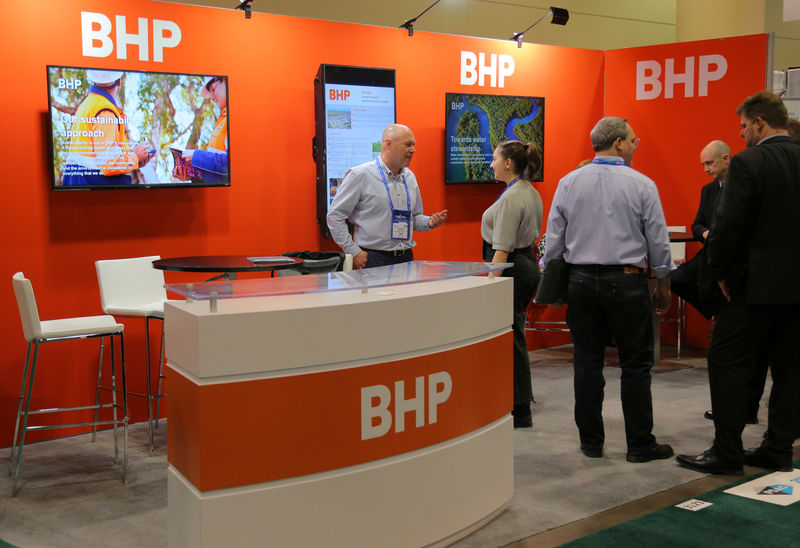MELBOURNE (Reuters) - An emergency crew called out to manually apply handbrakes to a 268-car iron ore train in the Australian outback mistakenly put the brakes on the wrong train, according to a preliminary report into a runaway train derailment last year.
In the incident last November, the BHP Group ore train had to be deliberately derailed after it reached speeds of 162 km/hour (101 mph), destroying two locomotives, 245 ore cars and 2 km (1.2 miles) of track. No-one was hurt.
The Australian Transport Safety Bureau (ATSB) said on Tuesday the train, carrying iron ore to Port Hedland in Australia's remote northeast, came to a halt after it lost communication between the front locomotive and a monitor at the train's rear.
The driver "applied the independent brake" and exited the cab to manually apply handbrakes to the train's 268 ore cars, while awaiting assistance from an emergency ground crew, the regulator said in its report.
Another empty train came to a stop on an adjacent track, and 30 minutes later the ground crew arrived and were asked by train control to start applying brakes from the rear of the train and work towards the driver.
An hour after stopping, the driver noticed air venting from the brakes and saw the train move forward, then start to roll away. A number of penalty brake applications were triggered but were ineffective.
"Four minutes later, the driver of the empty ore train advised train control the ground crew had mistakenly applied handbrakes to his train," the report said.
The fully laden ore train was travelling at 144 km/hour (89 mph) an hour when it was derailed and the lead locomotives ran on for a further 1.6 km (1 mile) before coming to a stop, the ATSB said.
"The investigation is continuing and will look at a number of factors including the design of train braking systems used by the operator and procedures in the operator's safety management system," it said.
BHP reiterated on Tuesday that its own investigation had found the incident was due to procedural non-compliance by the driver, as well as issues in integrating the electronic braking system with the rail network.
"Prior to exiting the cabin of the lead locomotive the driver did not apply the automatic brake handle to the emergency position as required," Asset President, BHP Western Australia Iron Ore, Edgar Basto said in a statement. If that had been applied the train would not have rolled away, he said.

The ATSB expects to release its final finding later this year.
